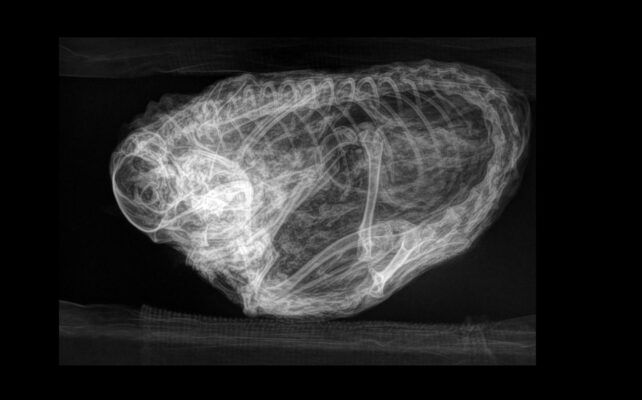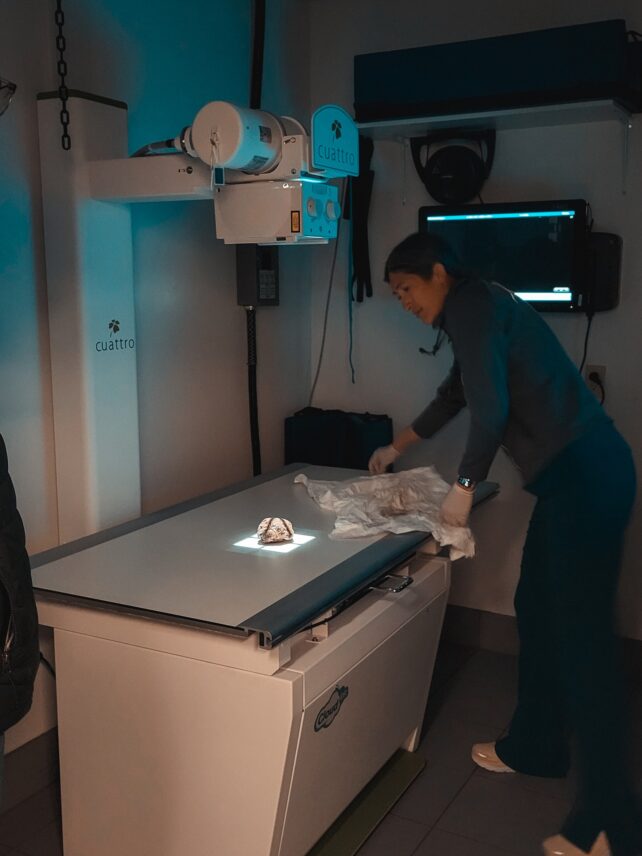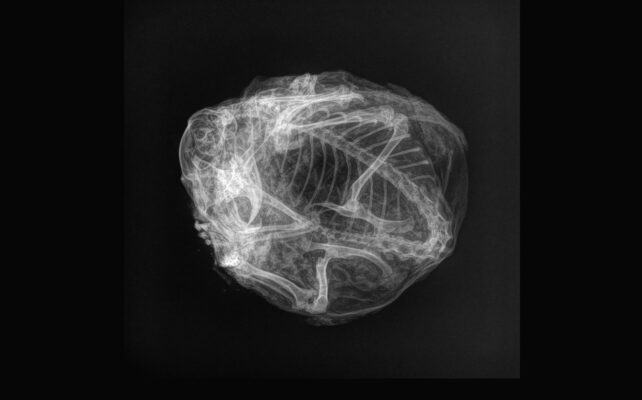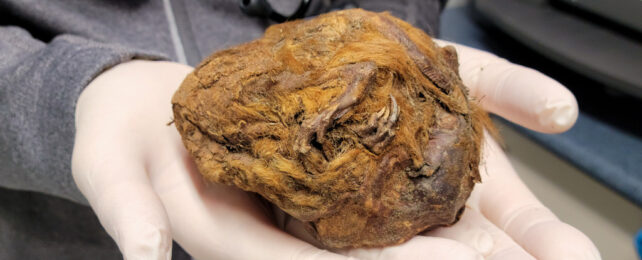At first the brown, mangled ball of fur and claws is unidentifiable.
But X-ray scans have revealed this grapefruit-sized lump is actually a 30,000-year-old mummified ground squirrel from the ice age.
A gold miner found the mysterious fur ball in 2018 in the Klondike gold fields near Dawson City, Yukon, according to the Yukon Beringia Interpretive Centre.
"It's not quite recognizable until you see these little hands and these claws, and you see a little tail, and then you see ears," Grant Zazula, a Yukon government paleontologist, told CBC.

He took it to veterinarian Jess Heath for further investigation. Heath conducted X-ray scans that revealed the frozen hair ball was actually a young, curled-up Arctic ground squirrel. It likely died in hibernation, possibly during its first year.
"We could see that it was in great condition and it was just curled up like it was sleeping," Heath told CBC.
"I'm really impressed that someone recognized it for what it was. From the outside, it just kind of looks like a brown blob. It looks a bit like a brown rock," she said.

The Klondike gold fields of the Yukon have been covered in permafrost – frozen soil – since the ice age. That makes the area perfect for preserving creatures that died back then – hair, nails, and all.
Gold miners there have previously stumbled upon a mummified wolf pup and an immaculately preserved baby mammoth.
Discoveries like these are likely to become more common as global temperatures continue to rise due to human emissions of heat-trapping gases like carbon dioxide and methane. That's causing the permafrost to thaw, revealing everything from mummified creatures to viruses and anthrax deposits.
A ground squirrel for the ages
This squirrel was discovered within the Traditional Territory of the Tr'ondëk Hwëch'in people.
It's the same species of Arctic ground squirrel that still lives throughout the Yukon today. They look more like groundhogs than tree squirrels.
These critters make nests underground for their hibernation. Many of these nests have been preserved since the ice age, and they're common findings in the Yukon. A whole squirrel is more rare.

"I study bones all the time and they're exciting, they're really neat. But when you see an animal that's perfectly preserved, that's 30,000 years old, and you can see its face and its skin and its hair and all that, it's just so visceral. It brings it so to life," Zazula told CBC.
"Some people get really, really excited when they find that giant woolly mammoth leg or, you know, the big tusks or the big skulls. But for me, the Arctic ground squirrel fossils, the nests, and now this mummified squirrel, are really the coolest things that we do have. They're my favorites, for sure," he added to the CBC.
The Yukon Beringia Interpretive Centre posted photos of the mummy and its X-ray on Facebook, announcing that the specimen would be on display soon.
"It's amazing to think that this little guy was running around the Yukon several thousand years ago," the post read.
This article was originally published by Business Insider.
More from Business Insider: